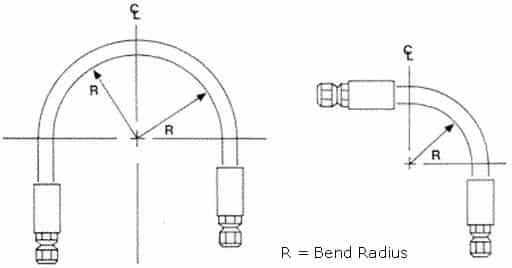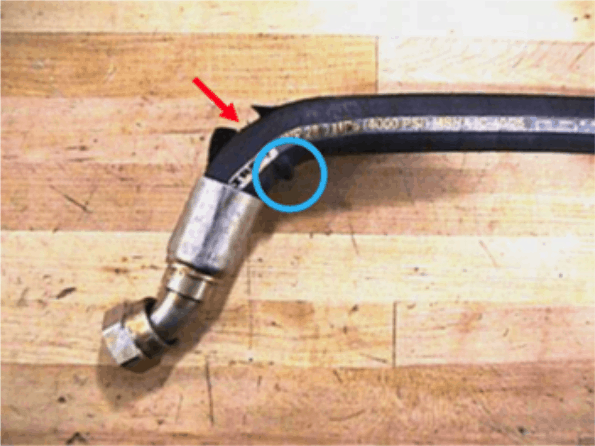The minimum bend radius is important when selecting hydraulic hose because it is the limit a hose can be bent without being kinked or damaged. It’s best to be aware of the system where tight space constraints may cause the hose to bend severely around corners, as well as when a machine or cylinder extends and retracts. The hoses attached to the moving parts may have to bend more than in the machine’s stationary position.
What is bend radius?
The minimum bend radius represents the smallest diameter that a looped hose can achieve without damage and is measured as the distance to the inside edge of the hose (not the center line) when making a 90-degree bend.

A hydraulic hose is constructed of three layers: core, reinforcement, and cover. Reinforcement layers can be one or two layers of a braided textile or braided steel or four or six spiral layers of wound steel.
Braided steel is typically more flexible and has a tighter bend radius than spiral steel. Higher pressure hoses require there to be more layers of reinforcement which causes the hose to have a larger bend radius.
The number of braids or spirals also affects the bend radius. One layer of braids will not be as flexible as a two-layer braided hose. A four wire spiral wrapped hose will be more flexible than a six wire spiral wrapped hose and have a larger bend radius.
There are times where you can go smaller radius on the bend but you will force the hose to fold in half and fatigue the hose and have a hose failure. Textile reinforcement has a tendency to kink as the bend radius is reduced. It is never a good idea to use a hose past the minimum bend radius. When a hose is bent beyond its rated bend radius it restricts flow, decreases the life of the hose, potentially causes a safety hazard, and may cause kinking and failure.
So can you look at a failed hose and know that it was installed in too tight of a bend? When the hose bursts at the outside bend it will often be due to the excessive bend and there may be broken wires in the area of the failure. If it is on a vacuum or suction application the hose may be flattened out in the bend area, which can reduce or restrict flow. If the bend is severe the hose may kink.

Bend Radius Damage on Hydraulic Hose
If you have this problem, your solution is to replace the hose assembly. You will want to re-route it to increase the bend in accordance with the manufacturer’s suggested bend requirement. Another suggestion is to run the hose straight out of the fitting’s crimped on shell for a distance of at least two times its inside diameter before it begins to bend.
